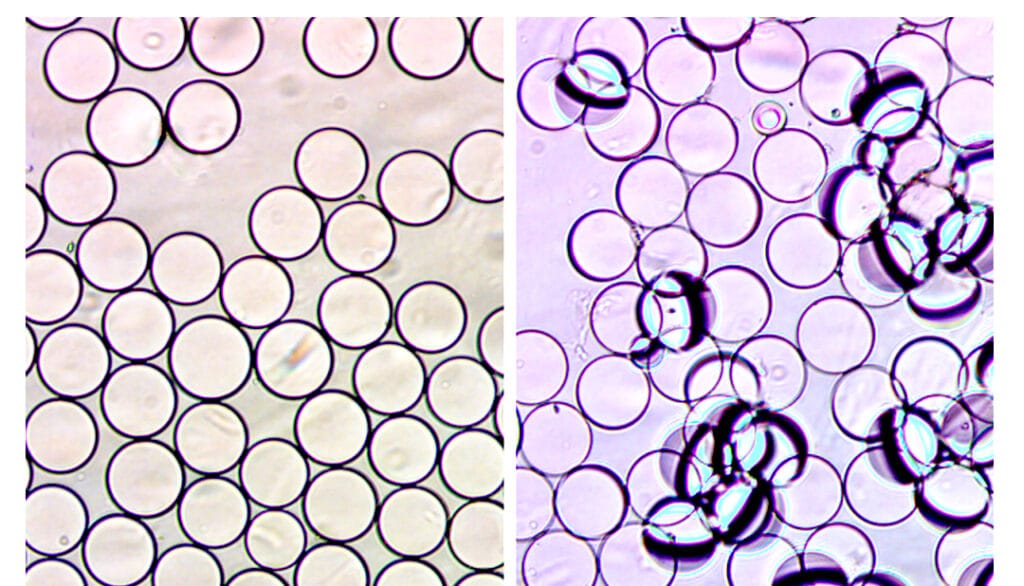INTRODUCTION
Generally, a normal human eye can not detect bacteria on a food sample. However, contaminated food and safe food look similar to the human eye. As science is advancing these days, companies can use a prototype of new testing which can detect bacteria easily. This could be a”two-faced emulsion droplet” to highlight the bacteria in a food sample by using a smartphone or just by looking at the droplets.
Current methods require a lot of time to find out whether a food sample contains bacteria or not. It requires nutrient agar, Petri dishes, food sample and 24 to 72 hours to check the bacteria colony. Some new technologies such as detecting the bacterial DNA in the food sample may give faster results. But it is not quite economic and it requires more specialized equipment. Some more simplified tests include some virus which causes fluorescence upon interaction with E.coli and another detect gas upon release.
JANUS DROPLET: THE TWO-FACED DROPLET (FOOD BACTERIA)
To overcome these conflicts, a group of researchers from MIT has developed an emulsion which possesses two faces. This is a two-faced droplet aka Janus droplet to highlight bacteria in food. This is named after the Roman god with two faces. This droplet contains a fluorocarbon half and a hydrocarbon half. However, the heavier fluorocarbon side will sink to the bottom. When we look at the droplet from above, the droplets will look clear, but if we look it from another angle they become a bit murkier, as light bounces around inside.
The researches attached a molecule on the top of the droplet that is on the surface of the hydrocarbon half. However, these molecules can bind to a protein that is found on some types of E. coli bacteria. Then the droplet will roll over, make clumps in the presence of the bacteria and look cloudy or hazy from above.

To detect the bacteria, the researcher put a Petri plate full of these droplets on the top of a QR code. And used a smartphone or QR code scanner to scan the code. If the system detects E. coli, then the droplets become opaque making the QR codes unreadable by the scanner.
“The great advantage of our device is you don’t need specialized instruments and technical training in order to do this,” says Qifan Zhang, lead author of the study. “That can enable people from the factory, before shipping the food, to scan and test it to make sure it’s safe.”
This new technique is not available commercially. However, researchers are still trying to make the method more sensitive and extend it to seek out other bacterias.
“You could imagine making really selective droplets to catch different bacteria, based on the sugar we put on them,” says Suchol Savagatrup, another author of the study.
Source:
- ACS Chemical Science
- http://pubs.acs.org/doi/full/10.1021/acscentsci.7b00021,
- MIT,
- Newatlas



